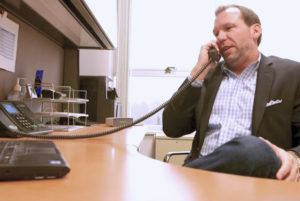Immediate Signs and Symptoms of a Birth Injury
Some symptoms of a childbirth injury may be obvious shortly after the baby is delivered. For example, if your baby is lying on their back, their head may lag a bit when you pick them up. The infant may also have a “stiff” feeling while being held.
Early signs of a birth injury may include:
- Abrasions, bruises, or swelling on the infant’s face, head, or shoulder
- A “floppy” appearance indicating lack of muscle tone
- An infant requiring resuscitation (CPR or a breathing tube) at the time of delivery
- An infant’s failure to begin breathing immediately following delivery
- One arm that is limp in appearance
- Seizures that develop within 48 hours
Keep in mind that these are general birth injury signs and symptoms. It’s important to consult a medical professional if you notice symptoms of a birth injury.
Even if your child doesn’t have an official diagnosis yet, Sokolove Law may still be able to help. We have a team of registered nurses on staff who can listen to your story and help you understand what may have happened — at no out-of-pocket cost to you.
Birth Injury Symptoms That Develop Later
There are other signs of a birth injury that don’t show up until a child gets a little bit older. In fact, the severity of symptoms might not be clear for a year or longer.
These are examples of symptoms that may not appear until a baby is about a year old:
- An inability to crawl, walk, or sit up
- Stiffness in the joints or muscles or an inability to control leg or arm movement
- The child has trouble performing basic movements, such as clapping or grasping
If you believe your baby’s injury may have been caused by a medical mistake, contact Sokolove Law today.
As an established national birth injury law firm, we can help you understand your legal options and pursue compensation for your child’s treatment if you have a case.
“My baby had to stay in the NICU. Now, she is almost 3 and isn’t developing like other kids. Sokolove Law helped us fight for justice and get the money we needed to give our child special care and treatments. I can’t thank Sokolove Law enough."
– Mother in Massachusetts & Firm Client
Brain Injury at Birth Symptoms

Medical negligence can often lead to brain damage or a baby experiencing symptoms of a brain injury at birth.
For example, bleeding of the brain due to the use of vacuum extractors can lead to shock. Symptoms include swelling that spreads from the neck to the ears, which may then seem out of place.
Skull fractures can occur after forceps are used during a delivery. If the baby has what looks like a dent in their head, that could be a sign that a fracture has occurred.
“After hours of labor, my daughter arrived unresponsive, with severe bruising and swelling on the back of her head. Thankfully, Sokolove Law fought for justice and the best care for my child. The compensation they secured for my daughter has been life-changing.”
– New York City Mother & Firm Client
Signs of Cerebral Palsy
Cerebral palsy (CP) is a very common developmental disability that’s often caused by brain injury at birth. In some cases, a medical professional’s mistake can cause the development of CP.
Medical errors can cause a rupture of the uterus or umbilical cord complications, such as the cord wrapping around the baby’s throat. These can cut off oxygen to the infant’s brain. Oxygen deprivation or asphyxia can result in cerebral palsy.
The signs of cerebral palsy include:
- Difficulty eating
- Excessive drooling
- Missing certain developmental milestones, like rolling over, sitting, or standing
- Seeming to favor one side of the body — crawling while dragging one leg or reaching with one hand far more often than the other
- Stiff muscles or issues with muscle control or motor skills
- Trouble swallowing
If a brain injury at birth caused your child to develop cerebral palsy, you may be able to file a cerebral palsy lawsuit to pursue compensation that can help cover your child’s treatment and hold the negligent medical professionals accountable.
Get the Help Your Child Deserves
You may be eligible for compensation. We may be able to help.
Nerve Injury at Birth Symptoms

A baby can sometimes suffer severe nerve damage at birth, oftentimes due to an error on the part of a health care professional.
Doctors will sometimes use too much force in an effort to remove a baby from the birth canal, damaging the brachial plexus in the process. This is a group of nerves located by the neck that gives feeling to the arms, shoulders, hands, and fingers.
Signs of Brachial Plexus Injuries and Erb’s Palsy
Brachial plexus injuries at birth symptoms can differ, depending on how much damage has occurred. In general, though, symptoms of brachial plexus injuries include:
- Lack of arm movement, indicating a possibility of partial or complete paralysis
- Limited range of motion
- Numbness or weakness in one arm
Erb’s palsy, for example, is a type of brachial plexus injury that leads to a loss of arm motion as well as arm weakness.
Signs of Klumpke’s Palsy
Klumpke’s palsy is another birth injury that affects the brachial plexus nerves. It leads to weakness of the hand and wrist.
Symptoms of Klumpke’s palsy include:
- Atrophy of the hand and/or forearm
- Limpness or paralysis of the affected arm
- Tightening of the fingers and wrist
If your baby is showing symptoms of a nerve injury at birth, talk to your doctor for medical advice. If you suspect medical malpractice or negligence may be responsible for your child’s birth injury, you may have legal options available to pursue compensation.
Get a free case review today to learn more about how Sokolove Law may be able to help.
Even if your child isn’t diagnosed yet, our team of registered nurses can listen to your story, answer your questions, and help you understand your options.
Learn More About Your Options
If you believe your child experienced a birth injury as a result of a medical mistake, an experienced birth injury lawyer can help you understand your legal options.
Developmental Delays or Missed Milestones
Infants can miss certain developmental milestones, which can also be one of the symptoms of a childbirth injury. These milestones include things like smiling, taking a first step, speaking, and more.
If your baby hasn’t reached the following milestones, talk to your doctor to see if something may be wrong.
Milestones at 2 Months of Age
- Beginning to follow objects with their eyes
- Making gurgling noises
- Making smoother leg and arm movements
- Smiling at people
- Turning their head toward sounds
Milestones at 6 Months of Age
- Ability to pass objects from one hand to the other
- Beginning to recognize familiar faces and tell the difference between familiar people and strangers
- Responding to the emotions of others
- Rocking backward and forward
- Seeming to be happy
- Sitting without being supported
Milestones at 1 Year of Age
- Acting nervous around strangers
- Playing a simple game, such as “peek-a-boo”
- Pulling themselves up to stand
- Shaking their head
- Standing on their own and taking a few steps
- Starting to cry when a parent leaves the room
- Trying to talk
- Walking while holding something, such as a piece of furniture
- Waving
What Do I Do If My Child Shows Birth Injury Symptoms?

If your child suffered a birth injury that may have been due to medical negligence or malpractice, Sokolove Law may be able to help with your birth injury case.
Our birth injury lawyers have decades of experience handling cases like these and helping families affected by birth injuries pursue the justice and compensation they deserve.
Over the last 45+ years, we’ve recovered more than $1 Billion on behalf of children injured at birth.
Get a free case review or call (800) 995-1212 today to speak with our experienced team of registered nurses and learn more about your legal options.
Signs & Symptoms of a Birth Injury FAQs
When should I contact a lawyer if my child shows signs of a birth injury?
If your child is exhibiting birth injury symptoms, get in touch with an attorney as soon as you can. While a birth injury law firm may be able to help you obtain compensation, you only have so much time to take legal action. This time period is known as the statute of limitations.
If you try to file a lawsuit after the statute of limitations has passed, your case will be dismissed — regardless of how strong your case may be or how badly your child has been injured.
Different states have different statutes of limitations, so be sure to contact Sokolove Law as quickly as possible for a free consultation.
Does my child need a diagnosis before I can contact a lawyer?
No — even if your child doesn’t have a diagnosis yet, you can still contact a birth injury lawyer with Sokolove Law if you believe your child suffered a birth injury as a result of a medical error.
We have a team of registered nurses on staff with decades of labor and delivery experience. They can listen to your story and help you understand what may have happened — as well as what your legal options are now.
What are common birth injuries?
Two of the most common birth injuries are cerebral palsy (CP) and Erb’s palsy. CP makes it hard to maintain balance and will often make it difficult for someone to walk without a mobility aid, such as a walker. In some instances, people with CP can’t walk at all and will need a wheelchair. Medical malpractice can often result in a baby developing CP.
Erb’s palsy happens when the brachial plexus is damaged. This is a group of nerves that provide feeling to the upper body, namely the shoulders, arms, and hands. Being forcefully removed from the womb can severely damage these nerves in a baby, potentially leading to a lifetime of complications.
If you see signs of a birth injury in your baby that may have led to CP or Erb’s palsy, the birth injury lawyers at Sokolove Law may be able to help. Learn more about your legal options today during a free case review.
How do I know if my baby has nerve damage?
There are many signs that a birth injury has led to nerve damage. In many cases, improper medical techniques, such as the use of forceps or a vacuum, can lead to severe injuries.
Here are just some of the signs that a child may have an injury affecting their nerves:
- Lack of muscle development
- Muscle weakness
- Numbness
- Sensitivity
- Tingling
How does a doctor check if a baby is OK right after delivery?
Doctors perform a test known as the Apgar score to check the newborn’s muscle tone, heart rate, respiration, skin color, and reflexes. The test is performed at least twice — at 1 minute after birth and again 5 minutes after birth.
The first shows how the baby handled the process of birth, while the second shows how well the baby is doing outside of the mother’s womb.
The Apgar score is listed as either 0, 1, or 2. The higher the number, the better the baby is doing. For example:
- If the infant is crying, that would be a respiration score of 2
- If breathing is irregular or slow, the score is 1
- The score is 0 if the infant isn’t breathing at all
